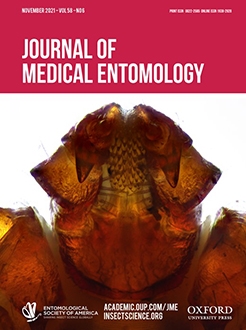The house fly, Musca domestica L. (Diptera: Muscidae), is a nuisance pest often associated with livestock production, and it can also mechanically transmit the causal agents of human and veterinary diseases. We found that a 0.5% concentration of p-anisaldehyde, produced by many plants consumed by humans, repelled adult M. domestica in static air olfactometer tubes under laboratory conditions for ≥24 h, but by 48 h the repellent activity had worn off. Repellency, however, was not observed in response to 0.5% p-anisaldehyde that had been exposed to sunlight radiation lamps for 2 h. When p-anisaldehyde was aged in darkness for 48 h, it showed strong initial repellency for <1 h. The repellent action of 0.5% p-anisaldehyde was sufficient to keep adult M. domestica from landing on three different food sources when the botanical substance was misted onto the food sources, and when it was placed in proximity to, but not in contact with, the food sources. Extension of p-anisaldehyde's repellent action using solvents other than acetone is discussed.
How to translate text using browser tools
27 May 2021
Repellency of p-Anisaldehyde Against Musca domestica (Diptera: Muscidae) in the Laboratory
Allan T. Showler,
Jessica L. Harlien
ACCESS THE FULL ARTICLE
It is not available for individual sale.
This article is only available to subscribers.
It is not available for individual sale.
It is not available for individual sale.

Journal of Medical Entomology
Vol. 58 • No. 6
November 2021
Vol. 58 • No. 6
November 2021
botanical
house fly
organic
residual effect
sunlight





